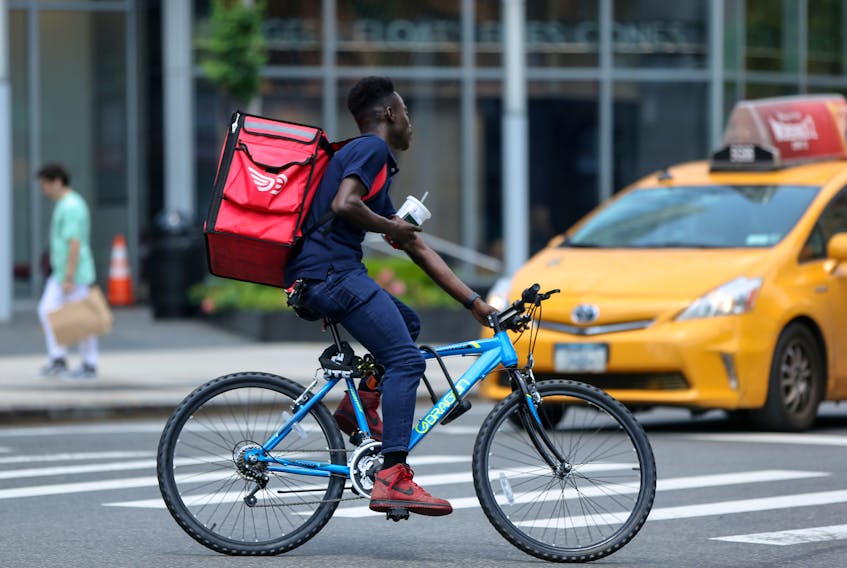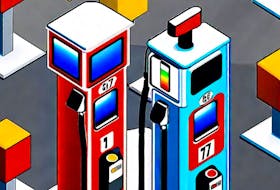COVID-19 is likely going to redefine grocery shopping in more ways than one. Convenience now has a different meaning. It’s less about saving time and more about survival and safety. Before the crisis, barely anyone ordered online and many Canadians wondered why someone would ever order food online.
Many things are changing, and changing rapidly. The in-store shopping experience is changing quickly to meet the new standards. Most grocers have reduced shopping hours to give employees a rest and allow for stores to be thoroughly cleaned, from counters to carts, cashiers’ machines to self-checkout counters. Plexiglas barriers at checkouts are being installed.
Expectations are that grocery stores now must be as clean as an hospital operating room. That comes at a cost. Grocers are also limiting the number of people visiting stores at any given time, and getting customers to shop within a limited time. This is shopping under pressure for the betterment of society. Grocers basically do not have much of a choice, and they need to pay employees more. While 500,000 Canadians got laid off last week, Loblaw and Metro announced pay increases for employees.
For many years, the industry wanted to provide a different feel to make the in-store experience more pleasant and less stressful. COVID-19 is changing all of this now.
According to a report released by Dalhousie University this week, only 24 per cent of Canadians are comfortable with the idea of grocery shopping. In other words, more than three-quarters of Canadians see the grocery store as an inherent risk. Selling to someone who is concerned about their own health as they visit your facility is not good for business. When looking at the entire food chain, retailing has always been the most hazardous part, given that everyone, and anybody, has access to the foods, unlike farming or processing. In an era during which risk self-management has never been so prevailing, Canadians are beginning to figure it out.
As a result of the COVID-19 outbreak, nine per cent of Canadians are now shopping for food online for the first time, according to the same survey. It may not seem like many, but keep in mind that 1.5 per cent of all food sales were conducted online before the crisis. That percentage had already begun to grow higher, but COVID-19 will likely accelerate the pace. In the United States, some changes are already happening. Downloads of Instacart, Walmarts grocery app', and Shipt have increased 218 per cent, 160 per cent, and 124 per cent respectively last week compared to a year ago.
Compared to other disruptive events in our lives, COVID-19 is different in many ways. Humans are creatures of habit. In time, we do change our ways, especially with food. But we need time. COVID-19 may likely offer enough of us time to change how we purchase our food. Public health officials believe social distancing can last for months. In other words, this is not your typical storm or hurricane when lives are disrupted for merely a few days, or a week or two. Such a length of time can be enough to create habits, such as shopping online. Grocers already cannot keep up these days.
Food service
When location and brick-and-mortar business becomes secondary factors, a business’s path to success in food distribution changes dramatically.

With crises and disruptions come opportunities for the food industry to adapt. Over the last few years the food industry has been slowly gaining an online presence in order to counter the Amazon menace. It was all about Amazon. Now, purchasing online is all about safety. Before Amazon, foot traffic in stores was the one metric grocers looked at with extreme caution. Those days are long gone. COVID-19 is a powerful reminder of how business models can be so fragile. It is similar for the food service industry. Restaurants either served patrons in house or delivered by managing a crew of delivery personnel. Food delivery apps have changed all that, and more Canadians are using them since the start of the COVID-19 outbreak.
COVID-19 has the potential to be as disruptive to the food retail and service industries as the Green Revolution was to agriculture. The Green Revolution made agriculture more adaptable to modern food consumption trends. Since the beginning of the revolution, in the 1950s, the globe has five billion more occupants and the percentage of people who are food insecure has dropped significantly. The Green Revolution made the entire sector more efficient, smarter, and more immune to threatening diseases and other potential socio-technological threats. The Green Revolution has not been perfect, far from it, but we have all benefited from it as consumers, whether we recognize it or not. Food distribution by way of different technological means won’t be perfect either, but it will make food distribution more compliant to our modern reality.
When location and brick-and-mortar business becomes secondary factors, a business’s path to success in food distribution changes dramatically. The transition from traditional agriculture, in which inputs were generated on-farm, to the Green Revolution agriculture, which required the purchase of inputs, led to the widespread establishment of different credit processes. An entire new ecosystem was built to support agriculture. With COVID-19, we may see the rise of dark or ghost kitchens in food service, allowing anyone to start a food service company, virtual or not. The establishment of more micro-fulfilment centres or dark warehouses to support grocers and other food retailers will redesign the entire sector.
This does not mean that Canadians will stop visiting grocery stores, farmers markets, or restaurants anytime soon. But, five years from now, perhaps even before, we could see 20 per cent of all food sold online or through apps, restaurants and retail combined. That’s potentially over $50 billion worth of food. According to estimates, it’s roughly around $7 to $9 billion right now. What was seen as a far-fetched concept by many just a few years ago appears to be a likely probability because of COVID-19.
Sylvain Charlebois is a professor in food distribution and policy in the Faculties of Management and Agriculture at Dalhousie University in Halifax and the senior director of the Agri-food Analytics Lab there.









